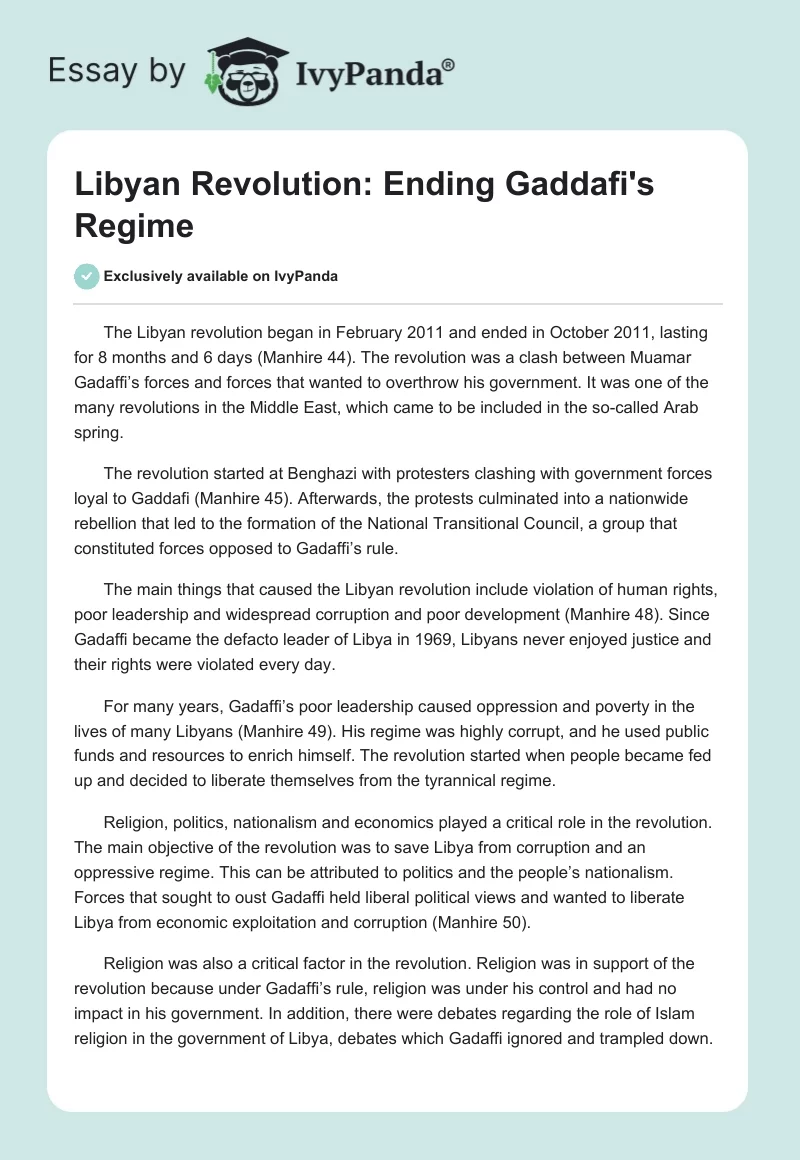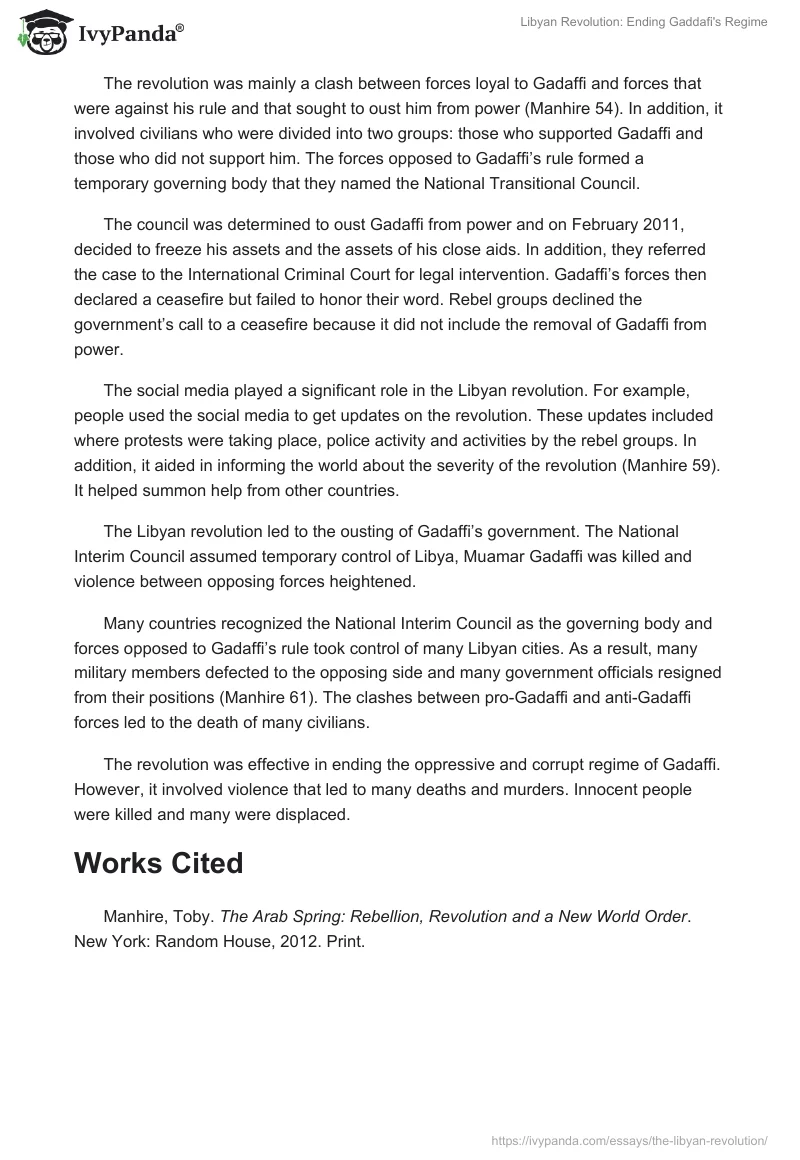The Libyan revolution began in February 2011 and ended in October 2011, lasting for 8 months and 6 days (Manhire 44). The revolution was a clash between Muamar Gadaffi’s forces and forces that wanted to overthrow his government. It was one of the many revolutions in the Middle East, which came to be included in the so-called Arab spring.
The revolution started at Benghazi with protesters clashing with government forces loyal to Gaddafi (Manhire 45). Afterwards, the protests culminated into a nationwide rebellion that led to the formation of the National Transitional Council, a group that constituted forces opposed to Gadaffi’s rule.
The main things that caused the Libyan revolution include violation of human rights, poor leadership and widespread corruption and poor development (Manhire 48). Since Gadaffi became the defacto leader of Libya in 1969, Libyans never enjoyed justice and their rights were violated every day.
For many years, Gadaffi’s poor leadership caused oppression and poverty in the lives of many Libyans (Manhire 49). His regime was highly corrupt, and he used public funds and resources to enrich himself. The revolution started when people became fed up and decided to liberate themselves from the tyrannical regime.
Religion, politics, nationalism and economics played a critical role in the revolution. The main objective of the revolution was to save Libya from corruption and an oppressive regime. This can be attributed to politics and the people’s nationalism. Forces that sought to oust Gadaffi held liberal political views and wanted to liberate Libya from economic exploitation and corruption (Manhire 50).
Religion was also a critical factor in the revolution. Religion was in support of the revolution because under Gadaffi’s rule, religion was under his control and had no impact in his government. In addition, there were debates regarding the role of Islam religion in the government of Libya, debates which Gadaffi ignored and trampled down.
The revolution was mainly a clash between forces loyal to Gadaffi and forces that were against his rule and that sought to oust him from power (Manhire 54). In addition, it involved civilians who were divided into two groups: those who supported Gadaffi and those who did not support him. The forces opposed to Gadaffi’s rule formed a temporary governing body that they named the National Transitional Council.
The council was determined to oust Gadaffi from power and on February 2011, decided to freeze his assets and the assets of his close aids. In addition, they referred the case to the International Criminal Court for legal intervention. Gadaffi’s forces then declared a ceasefire but failed to honor their word. Rebel groups declined the government’s call to a ceasefire because it did not include the removal of Gadaffi from power.
The social media played a significant role in the Libyan revolution. For example, people used the social media to get updates on the revolution. These updates included where protests were taking place, police activity and activities by the rebel groups. In addition, it aided in informing the world about the severity of the revolution (Manhire 59). It helped summon help from other countries.
The Libyan revolution led to the ousting of Gadaffi’s government. The National Interim Council assumed temporary control of Libya, Muamar Gadaffi was killed and violence between opposing forces heightened.
Many countries recognized the National Interim Council as the governing body and forces opposed to Gadaffi’s rule took control of many Libyan cities. As a result, many military members defected to the opposing side and many government officials resigned from their positions (Manhire 61). The clashes between pro-Gadaffi and anti-Gadaffi forces led to the death of many civilians.
The revolution was effective in ending the oppressive and corrupt regime of Gadaffi. However, it involved violence that led to many deaths and murders. Innocent people were killed and many were displaced.
Works Cited
Manhire, Toby. The Arab Spring: Rebellion, Revolution and a New World Order. New York: Random House, 2012. Print.


